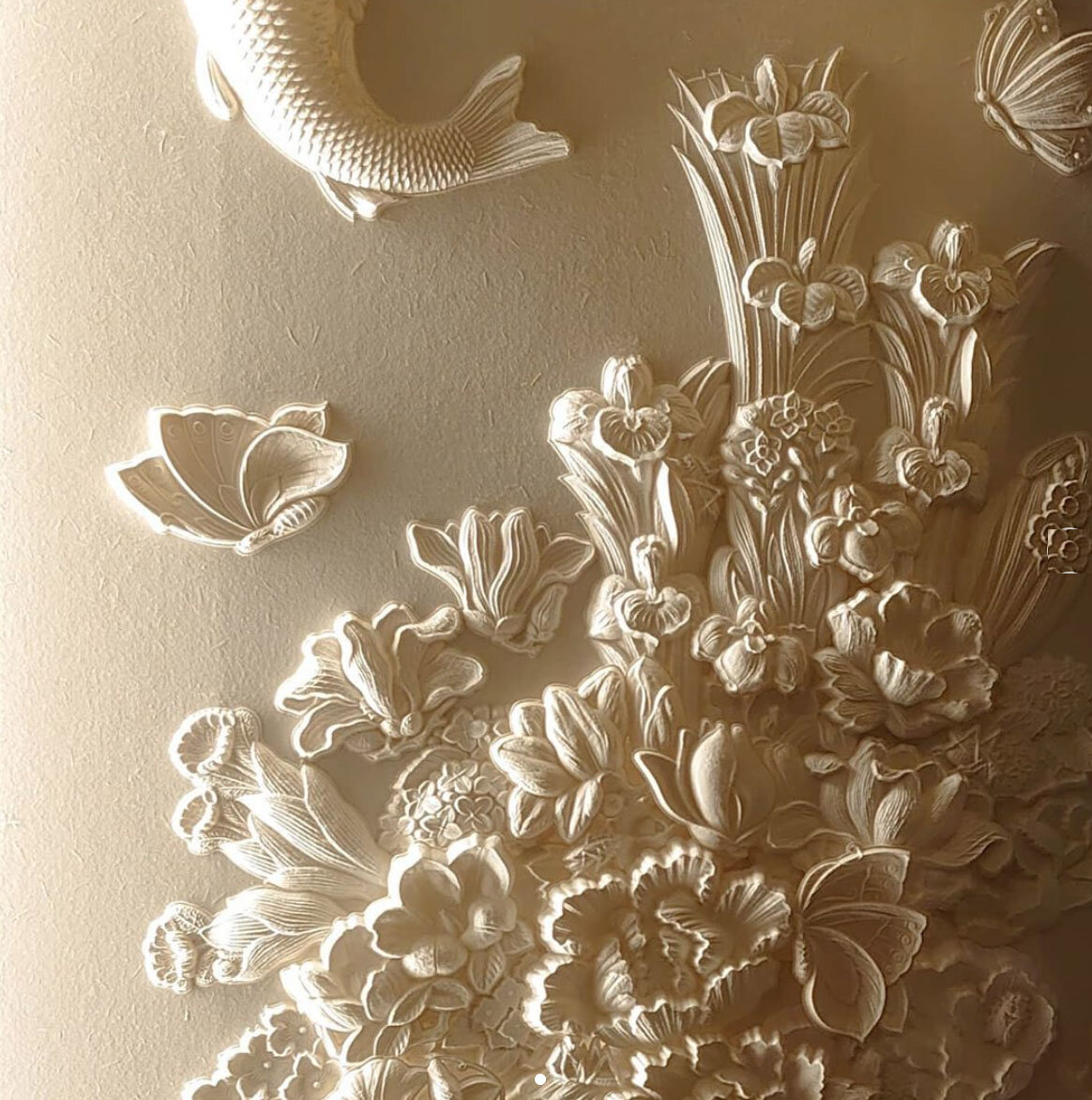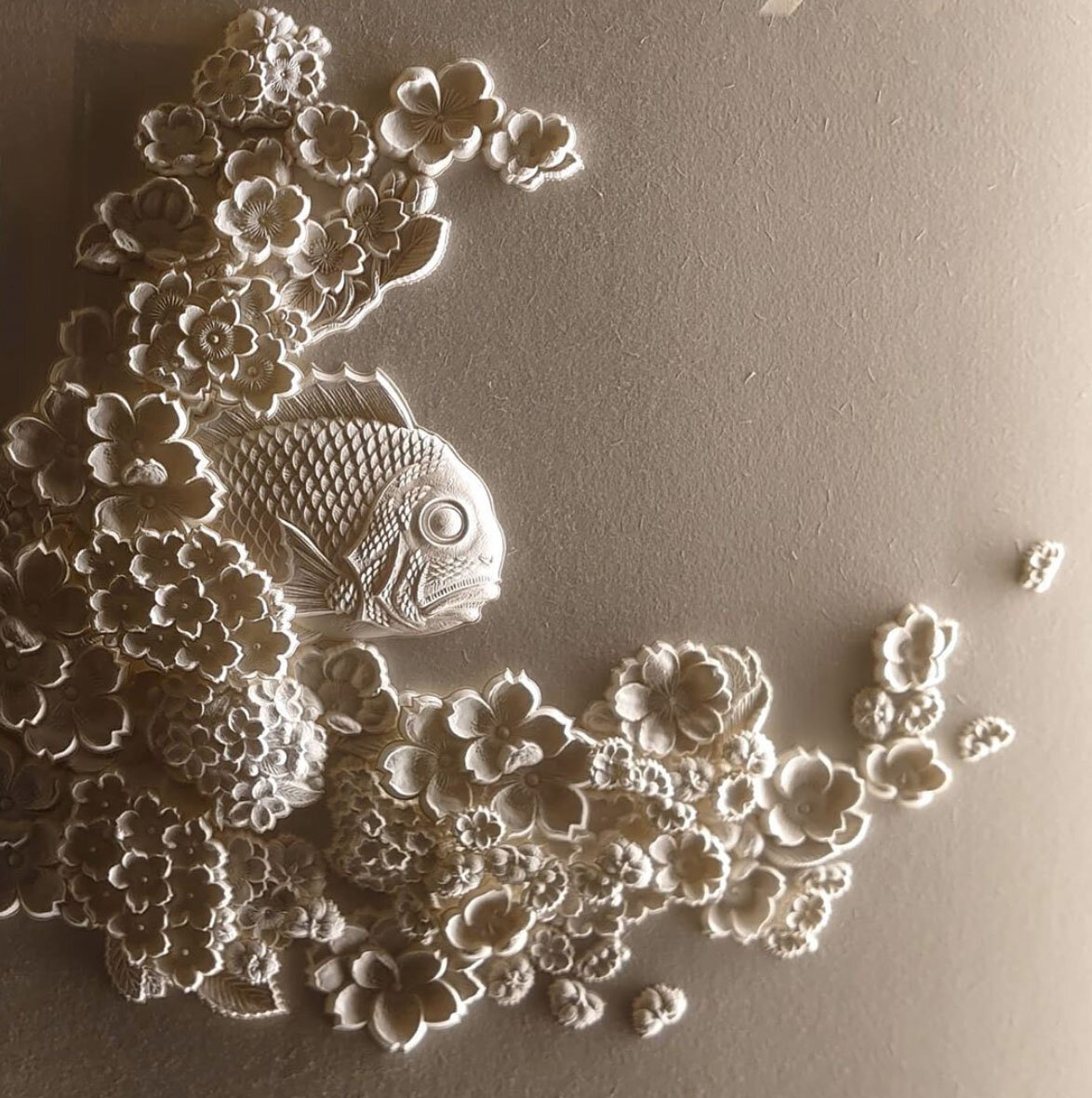Intricate Washi Paper Artworks by Tetsuya Nagata Adorn Elevators at Andaz Tokyo Hotel
Intricate washi paper artworks by Tetsuya Nagata adorn each elevator at Andaz Tokyo – Photo Courtesy of Andaz Tokyo
Japans rich history of craft and design dates back ever since humans settled on its islands. Traditionally artisans and trained workers used natural materials to craft functional objects. These objects were created to be used, but also to be displayed, a blurring of form and function which continues to be emphasized throughout Japan today.
So when Hyatt hotels partnered with Osaka born paper Artist Tetsuya Nagata for the Andaz Tokyo hotel, it was fate that the hotel would feature some of that old world arts and crafts.
Nagata, a master in the traditional craft of Washi, work explores the relationship of local, nature and history.
Using found wood moulds from around Japan, Nagata transforms handmade paper into 3 dimensional objects embodying their spirit and history. He learned the technique of natural sculpting at University, where he discovered how the process of combining the handmade paper with found objects could comprise all natural things, bringing them together in a formative beauty and a function of nature.
Intricate washi paper artworks by Tetsuya Nagata adorn each elevator at Andaz Tokyo – Photo Courtesy of Andaz Tokyo
To further understand Nagata’ appreciation of nature as well as these found objects, we need to look back to the 6th century where the belief of Yōkai or Shinto was popularized. The Japanese believed that spirits embodied everything in both the natural and physical world. Wonderful creatures and folklore-like spirit animals were considered to be apart of everyday objects, places, and all around us — plants, waterfalls, rocks — all had their own spirit.
At that same time around the 6th century, the Japanese art of making paper is thought to have begun. Washi, Wa which means ‘of Japan’, + shi meaning ‘paper’, the term is used to describe the special paper that uses local fiber, processed by hand and made in the traditional manner that Nagata uses today.
“I would like to leave a memory of Japanese beauty and tradition that people have forgotten. I am fascinated by the beauty of Japanese design that has been put into wooden moulds. Those moulds have in themselves the history of each craftsman’s work."
Washi is a constant theme throughout the hotel, from the handmade paper wall panels that frame the hallways and corridors, to the Hokkaido walnut wood panelling used in the lobby, guest rooms and rooftop bar. Throughout the hotel guests are treated to beautiful yet delicate works of art framed by these elegant interior spaces. The design team, a partnership between New York based Tony Chi and local Japanese designer Shinichiro Ogata worked to strike the perfect balance between traditional Shoji-style architecture and modern contemporary design that the Hyatt brand is known best for.
No more is this dance between tradition and modernity on better display than in each of the unique elevator interiors. Intricate dimensional washi paper artworks adorn each elevator interior turning the ordinary extraordinary. Fish dance off the walls, with ships, and candy jar mouldings all telling a different story.
Each elevator features a variety of natural icons and tokens, all of which are further highlighted by soft light-grazing from vertical linear LED’s deepening the already textured paper surface.
For centuries the belief in spirit-animals, be it Yōkai with its monstrous creatures, Shinto with its more everyday icons, or Kami which is more often associated with a specific place like the garden, or even the elevator, the Japanese have forever blurred the distinction between form, and function, physical and spiritual, and thus, the border between craft and art was always at play.












